How to get the best haircut for your face shape
Choose the hairstyle that matches your face
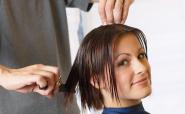 Have you ever gone to the salon, hairstyle magazine in hand,
hoping to have your locks transformed into the latest trend featured on
the front page only to have your stylist tell you that you do not have
the right shaped face to wear the style, or, worse yet, your stylist
puts that exact haircut on you, but you look nothing like the model
wearing the cut in the magazine?
Have you ever gone to the salon, hairstyle magazine in hand,
hoping to have your locks transformed into the latest trend featured on
the front page only to have your stylist tell you that you do not have
the right shaped face to wear the style, or, worse yet, your stylist
puts that exact haircut on you, but you look nothing like the model
wearing the cut in the magazine?
We’ve all had horrible
experiences in the stylist chair. Most of the time they are not
technical errors, but errors when it comes to choosing the right style
to compliment our facial structure and build.
When choosing
the perfect hairstyle for your unique look, stylists should take into
account your build. For example, close cropped styles would not suit a
person with a large frame, nor would a full-bodied style compliment a
person with a small frame. Making sure that your style and frame balance
is the key here.
Stylists also should look at your face shape
when choosing the best look for you. There are five basic face shapes:
oval, heart, round, square and triangular.
All of these shapes
can be beautiful, but one is ideal: oval. No matter what shaped face
you have, achieving the perfect look involves picking the right cut or
style that will make your face appear more oval.
Oval face
shapes are identified by the perfect symmetry of certain facial
features, such as the distance from the hairline to the bridge of the
nose (between the eyes), from the bridge of the nose to the lips, and
from the lips to the bottom of the chin. If your face is oval shaped,
you can consider yourself to be very lucky. This shape is the only one
that is complimented by almost every hairstyle imaginable.
Heart shaped faces are usually broader through the forehead and taper to
a point at the chin. You can make this shaped face appear more oval by
positioning the weight of the haircut at chin level, or by wearing bangs
in shorter styles. Keep in mind that the goal is to minimize the
forehead and to bring prominence to the chin.
Round faces are
just that: round. They have wide cheekbones and are usually smaller
through the forehead and chin. The goal here is to minimize the
cheekbones. Styles with height in the bang and sides cut toward the face
usually work best.
Square faces have a bold forehead and an
angular jaw line. Styles with soft edges, and a great deal of texture
directed toward the face really suit this shape. The length should be
kept longer than jaw length to draw attention away from the jaw, but, at
the same time, that length should be layered. A straight, sleek style
would only serve to accent the angular lines of the face.
Triangular shaped faces are angular at the jaw line, but narrow through
the forehead. They can be treated much the same way that square faces
are treated, with one exception; more height and fullness is needed
throughout the crown and bang areas to make this section of the face
appear larger.
Now that you know what your stylist knows, take
this knowledge with you on your next salon visit. This time, when you
thumb through the style books and magazines, you will be able to zero in
on your perfect new cut. Good Luck!
Abou the Author
Jenny Andrews writes articles for the
Beauty Biz on beauty, fashion, diet and fitness.
Jenny's
homepage Author: Jenny Andrews
October 26 2006





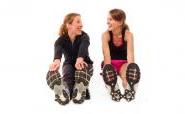 More than perhaps ever before, working out is important for women
of all ages. With an increasingly sedentary lifestyle requiring
little physical activity, we now find ourselves having to make a real
effort to remain fit. It is the key to a long life, good health, and
a happiness whether we like it or not!
More than perhaps ever before, working out is important for women
of all ages. With an increasingly sedentary lifestyle requiring
little physical activity, we now find ourselves having to make a real
effort to remain fit. It is the key to a long life, good health, and
a happiness whether we like it or not!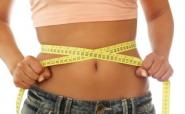 With the influx of food programmes on TV telling us how we should
be eating to stay healthy and to slim down, it appears that we have
become a nation enthused by weight loss.
With the influx of food programmes on TV telling us how we should
be eating to stay healthy and to slim down, it appears that we have
become a nation enthused by weight loss. Have you ever gone to the salon, hairstyle magazine in hand,
hoping to have your locks transformed into the latest trend featured on
the front page only to have your stylist tell you that you do not have
the right shaped face to wear the style, or, worse yet, your stylist
puts that exact haircut on you, but you look nothing like the model
wearing the cut in the magazine?
Have you ever gone to the salon, hairstyle magazine in hand,
hoping to have your locks transformed into the latest trend featured on
the front page only to have your stylist tell you that you do not have
the right shaped face to wear the style, or, worse yet, your stylist
puts that exact haircut on you, but you look nothing like the model
wearing the cut in the magazine?  These days, thanks to all the hair removal techniques available,
unwanted facial hair should not be a problem for women. If you want a
permanent solution and are prepared to pay more money up front,
there's a choice of electrolysis or laser hair removal. Alternatively,
there are several non-permanent methods such as waxing, sugaring,
tweezing or the use of depilatories. These treatments can be received
in a beauty salon or performed in the comfort of your own home.
These days, thanks to all the hair removal techniques available,
unwanted facial hair should not be a problem for women. If you want a
permanent solution and are prepared to pay more money up front,
there's a choice of electrolysis or laser hair removal. Alternatively,
there are several non-permanent methods such as waxing, sugaring,
tweezing or the use of depilatories. These treatments can be received
in a beauty salon or performed in the comfort of your own home. 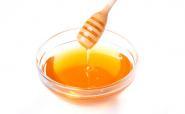
 Beauty blunders are common makeup, fashion or hair mistakes that
set an individual apart in a negative way. We all make them;
sometimes every single day. As long as we are happy with how we look,
in the long run, that is all that really counts. But for the rest of
us who would prefer to avoid those little blunders that set us
apart, here are some of the most common.
Beauty blunders are common makeup, fashion or hair mistakes that
set an individual apart in a negative way. We all make them;
sometimes every single day. As long as we are happy with how we look,
in the long run, that is all that really counts. But for the rest of
us who would prefer to avoid those little blunders that set us
apart, here are some of the most common. Although it contains no nutrients, water is essential to life and
for the growth and maintenance of our bodies. Many people are
dehydrated without even knowing it; this is typically caused by a
variety of factors:
Although it contains no nutrients, water is essential to life and
for the growth and maintenance of our bodies. Many people are
dehydrated without even knowing it; this is typically caused by a
variety of factors:  These days we are all in search of better health for ourselves
and our families. To achieve this we tend to look towards improving
our diets and exercise levels and other lifestyle changes, such as
more relaxation time. Whilst these factors are extremely important and
relevant one of the simplest and most fundamental ways of improving
both our mental and physical health is often overlooked! What is it?
These days we are all in search of better health for ourselves
and our families. To achieve this we tend to look towards improving
our diets and exercise levels and other lifestyle changes, such as
more relaxation time. Whilst these factors are extremely important and
relevant one of the simplest and most fundamental ways of improving
both our mental and physical health is often overlooked! What is it?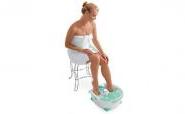 Detoxing has become a big topic in the world of health and
wellness. But what exactly is it, and why is it important? This
article will look into the science and benefits of detoxing in
general, and in particular at the increasingly popular Bio-energiser
Aqua Detox footspa treatment.
Detoxing has become a big topic in the world of health and
wellness. But what exactly is it, and why is it important? This
article will look into the science and benefits of detoxing in
general, and in particular at the increasingly popular Bio-energiser
Aqua Detox footspa treatment. 
